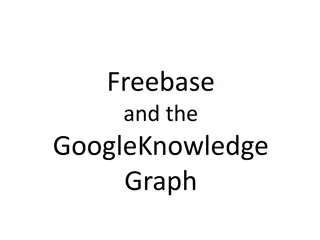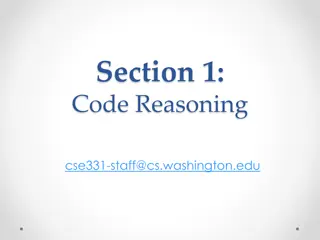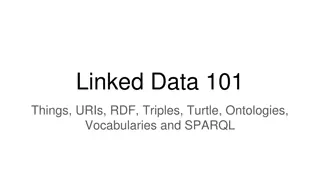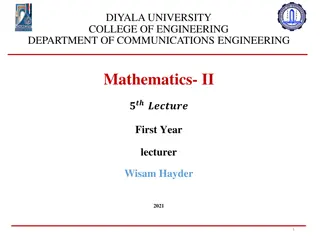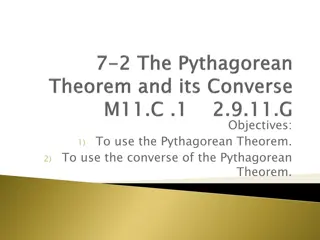Evolution of Freebase and the Google Knowledge Graph
Freebase was initially created in 2005 as an open shared database of knowledge, later acquired by Google and absorbed into the Google Knowledge Graph. Its approach included crowdsourcing updates and additions, focusing on data rather than text. The schema of Freebase included around 1500 types, 3500
1 views • 12 slides
Estimation of Dead-Time Loss for Neutron Count-Rates
This study discusses the estimation of dead-time loss for high neutron count-rates and the associated multiplicity correction using multi-channel list-mode data. The numerical method for high count-rate dead-time correction in neutron multiplicity counting is described, focusing on the use of multi-
0 views • 6 slides
Introduction to Code Reasoning in CSE331 Lecture
In this lecture, we delve into the fundamentals of code reasoning, focusing on forward and backward reasoning techniques in straight-line and if-statement code. The session includes reviewing the practice of identifying the strongest assertions and understanding the dual purposes of proving code cor
0 views • 24 slides
Understanding Linked Data: Basics to Publishing and Beyond
Delve into the world of Linked Data with topics ranging from its fundamental principles like URIs, RDF, and Triples to practical aspects like publishing data using standard web technologies such as HTTP. Explore the essence of RDF graphs, the significance of naming things with URLs, and ways to prov
0 views • 26 slides
Understanding Resource Description Framework (RDF) for Semantic Web
Resource Description Framework (RDF) is a key data model for the Semantic Web, providing a standard way to represent knowledge through subject-predicate-object triples. RDF serves as the foundation for various knowledge representation languages and ontology tools on the web. Through RDF, relationshi
0 views • 36 slides
Understanding Jena SPARQL for Mac and RDF Queries
Jena SPARQL for Mac is a powerful tool for querying RDF graphs using SPARQL. Learn about RDF graphs, models, triples, and how SPARQL queries work. Explore ARQ, a query engine that supports the SPARQL RDF Query language and features multiple query languages. Discover how to install ARQ and execute SP
0 views • 25 slides
Exploring Commensurable Triangles: Sides vs. Angles
Delve into the world of commensurable triangles through the lens of sides and angles. Discover the relationships between integer triples, Pythagorean triangles, Heronian triangles, and the fascinating properties that arise from their configurations. Uncover the intriguing patterns and dense sets wit
1 views • 23 slides
Understanding Three-Dimensional Coordinate Systems in Engineering Mathematics
Exploring how points are located in a plane and in space using ordered pairs and triples of real numbers, respectively. Discusses the use of coordinate axes, orientation, and the right-hand rule in representing points in three-dimensional space.
0 views • 42 slides
Exploring Pythagorean Theorem and Converse in Geometry
Uncover the mysteries of the Pythagorean Theorem and its converse in this educational content. Discover how to apply the theorem to find hypotenuses, determine Pythagorean triples, and verify right triangles. Engage in solving geometric problems involving triangles, lengths, and distances with pract
0 views • 11 slides
